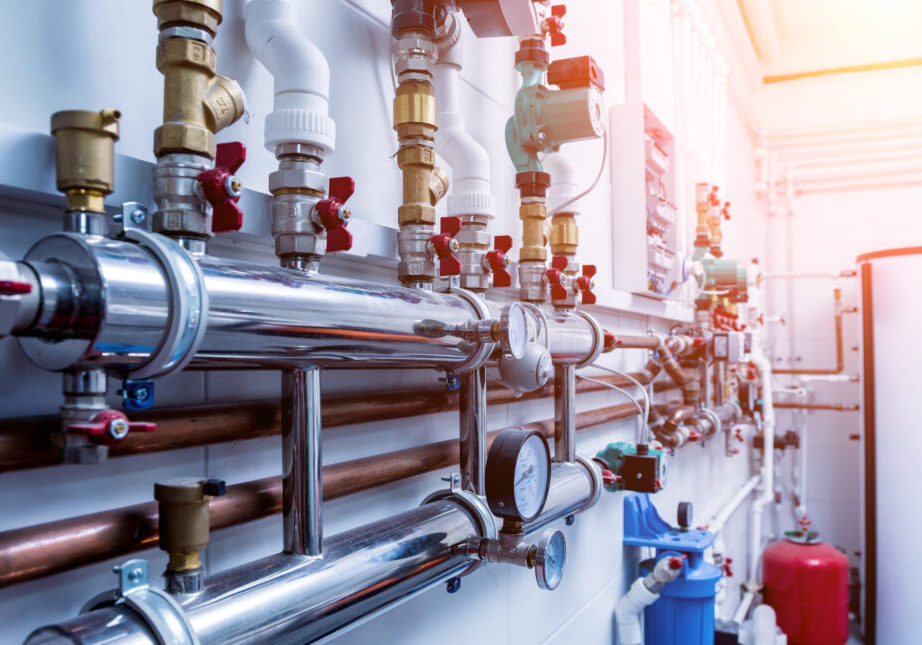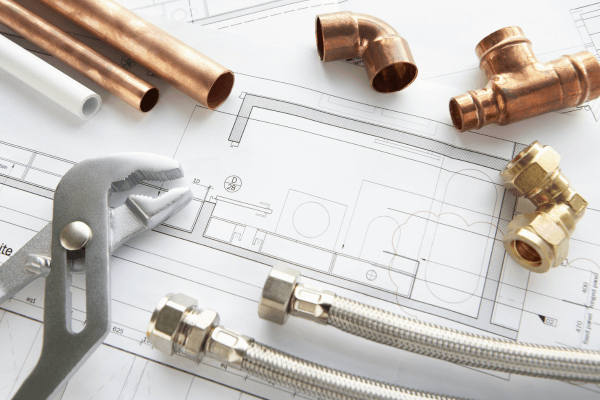What The Design of Your Home's Plumbing System Matters
What The Design of Your Home's Plumbing System Matters
Blog Article
Were you trying to locate ideas involving Understanding Your Home's Plumbing Anatomy?

Understanding just how your home's plumbing system works is necessary for every single homeowner. From providing tidy water for alcohol consumption, food preparation, and showering to securely eliminating wastewater, a well-maintained plumbing system is crucial for your family's health and wellness and convenience. In this comprehensive guide, we'll explore the elaborate network that comprises your home's pipes and deal tips on maintenance, upgrades, and managing usual problems.
Intro
Your home's pipes system is greater than simply a network of pipes; it's a complex system that ensures you have accessibility to tidy water and efficient wastewater removal. Understanding its elements and just how they interact can aid you avoid expensive fixings and make certain everything runs smoothly.
Basic Components of a Pipes System
Pipelines and Tubes
At the heart of your pipes system are the pipelines and tubes that bring water throughout your home. These can be constructed from numerous materials such as copper, PVC, or PEX, each with its advantages in terms of resilience and cost-effectiveness.
Fixtures: Sinks, Toilets, Showers, etc.
Fixtures like sinks, toilets, showers, and tubs are where water is utilized in your house. Comprehending exactly how these fixtures connect to the plumbing system helps in identifying problems and planning upgrades.
Valves and Shut-off Factors
Shutoffs regulate the circulation of water in your pipes system. Shut-off shutoffs are vital throughout emergencies or when you need to make repairs, allowing you to separate parts of the system without disrupting water circulation to the whole home.
Water System System
Main Water Line
The main water line connects your home to the municipal water supply or an exclusive well. It's where water enters your home and is dispersed to different fixtures.
Water Meter and Stress Regulatory Authority
The water meter procedures your water use, while a pressure regulator makes certain that water streams at a risk-free stress throughout your home's plumbing system, preventing damages to pipes and components.
Cold Water vs. Hot Water Lines
Understanding the difference between cold water lines, which provide water straight from the primary, and hot water lines, which lug heated water from the hot water heater, assists in repairing and planning for upgrades.
Drain System
Drain Water Lines and Traps
Drain pipelines carry wastewater far from sinks, showers, and toilets to the sewage system or sewage-disposal tank. Catches stop sewer gases from entering your home and likewise trap particles that could create blockages.
Air flow Pipes
Air flow pipes enable air into the water drainage system, avoiding suction that can slow water drainage and cause catches to vacant. Proper ventilation is vital for maintaining the stability of your pipes system.
Importance of Appropriate Drainage
Making sure appropriate water drainage avoids back-ups and water damages. Frequently cleansing drains and maintaining traps can protect against costly repair services and expand the life of your plumbing system.
Water Heating Unit
Sorts Of Water Heaters
Hot water heater can be tankless or typical tank-style. Tankless heaters warm water as needed, while containers store heated water for prompt usage.
Upgrading Your Plumbing System
Reasons for Updating
Updating to water-efficient components or replacing old pipes can boost water top quality, reduce water bills, and boost the worth of your home.
Modern Pipes Technologies and Their Advantages
Explore innovations like wise leakage detectors, water-saving commodes, and energy-efficient hot water heater that can save money and decrease ecological influence.
Price Factors To Consider and ROI
Calculate the upfront costs versus long-term cost savings when taking into consideration pipes upgrades. Several upgrades spend for themselves through reduced utility bills and fewer repair work.
Exactly How Water Heaters Link to the Plumbing System
Comprehending exactly how water heaters link to both the cold water supply and warm water circulation lines assists in identifying problems like inadequate hot water or leaks.
Maintenance Tips for Water Heaters
Frequently flushing your water heater to remove sediment, checking the temperature level setups, and evaluating for leakages can expand its life expectancy and enhance energy efficiency.
Common Plumbing Issues
Leakages and Their Causes
Leaks can happen as a result of maturing pipes, loose fittings, or high water pressure. Dealing with leaks promptly prevents water damages and mold and mildew development.
Obstructions and Clogs
Blockages in drains and toilets are typically triggered by purging non-flushable products or an accumulation of grease and hair. Using drain screens and being mindful of what goes down your drains can prevent obstructions.
Indicators of Plumbing Problems to Expect
Low tide pressure, slow drains pipes, foul odors, or uncommonly high water expenses are signs of possible plumbing troubles that ought to be addressed without delay.
Pipes Maintenance Tips
Normal Assessments and Checks
Schedule yearly pipes evaluations to capture problems early. Look for indicators of leaks, deterioration, or mineral accumulation in faucets and showerheads.
Do It Yourself Maintenance Tasks
Simple jobs like cleaning tap aerators, checking for commode leakages using color tablets, or protecting exposed pipelines in cold environments can avoid significant plumbing concerns.
When to Call an Expert Plumber
Know when a plumbing concern calls for professional experience. Attempting intricate repair work without correct knowledge can cause more damages and higher repair service prices.
Tips for Decreasing Water Use
Simple routines like repairing leakages promptly, taking shorter showers, and running complete lots of laundry and meals can preserve water and lower your energy costs.
Eco-Friendly Pipes Options
Take into consideration sustainable plumbing products like bamboo for flooring, which is durable and eco-friendly, or recycled glass for countertops.
Emergency situation Readiness
Steps to Take During a Pipes Emergency situation
Know where your shut-off shutoffs lie and how to turn off the water system in case of a ruptured pipeline or major leakage.
Significance of Having Emergency Get In Touches With Handy
Keep contact information for regional plumbings or emergency situation solutions easily offered for fast response during a plumbing crisis.
Environmental Effect and Preservation
Water-Saving Components and Devices
Mounting low-flow faucets, showerheads, and bathrooms can significantly decrease water usage without compromising performance.
DIY Emergency Fixes (When Suitable).
Momentary solutions like making use of air duct tape to spot a dripping pipeline or placing a bucket under a dripping faucet can minimize damage until a professional plumber arrives.
Conclusion.
Recognizing the makeup of your home's pipes system equips you to preserve it successfully, saving time and money on repairs. By adhering to normal maintenance routines and staying informed concerning modern-day plumbing technologies, you can ensure your plumbing system operates efficiently for years ahead.
HOW YOUR PLUMBING SYSTEM WORKS
Which Pipes Do What?
Blue lines = fresh water supply entering the building Red lines = hot water supply entering the building Grey lines = pipes carrying waste away from the building and venting pipes carrying gases away from the building (through the roof) YOUR MAIN PLUMBING SYSTEMS
There are two main plumbing systems that support your home s basic plumbing needs one that brings clean water into your home, and one that sends dirty water away from your home. Connected to the toilet, bath, shower, and other faucets in your home, these two systems keep your water flowing in the right directions.
ACCESSING FRESH WATER
Fresh and clean water is brought into your home through the main water supply line . Filtered through one pipe, this water is pressured to flow into the various fixtures in your home at any given time.
This water can be sourced from a well located on your property, a pond or river (mostly cottages), or, as in most cases, from the city s municipal water treatment centre. However, it is important to note that water that is untreated, such as the water siphoned from ponds or rivers, may not be safe to drink. Personal water supplies always need to be treated for hardness and contaminants before consumed.
MUNICIPAL WATER SUPPLIES
Improve taste and odour Remove sediment Eliminate hardness Reduce chlorine COLD WATER SUPPLY VS. HOT WATER SUPPLY
Cold water flows into your home or building through the service line, which then distributes hot or cold water to your fixtures. This line is most commonly run through a central column that runs floor to floor. Hot water runs in short and straight pipes as the longer the pipeline, the more heat that will be lost in the transfer. Having shorter pipes also allows residents to access hot water more quickly.
WASTE WATER SYSTEM
Your wastewater system is divided into two parts pipes that send wastewater away from your home and venting pipes that send sewer gas away from your home. Sewage water travels through pipes that flush the water and waste towards local sewers that are operated and managed by your city or town. Most sewer systems rely on gravity to move the wastewater to where it needs to go.
The further away from your toilet or sink, the larger wastewater pipes become. This allows for waste to be disposed of from various parts of your home or business at once without pipe blockages. The angle and flow of these pipes are also essential for keeping your waste pipes clear of build up.
https://harrisplumbing.ca/how-your-home-plumbing-system-works/

I hope you enjoyed reading our part about The Inner Workings of Your Home's Plumbing. Thanks for taking time to read our blog. If you please take a moment to share this blog posting if you liked it. I praise you for your time. Return soon.
Go Company Report this page